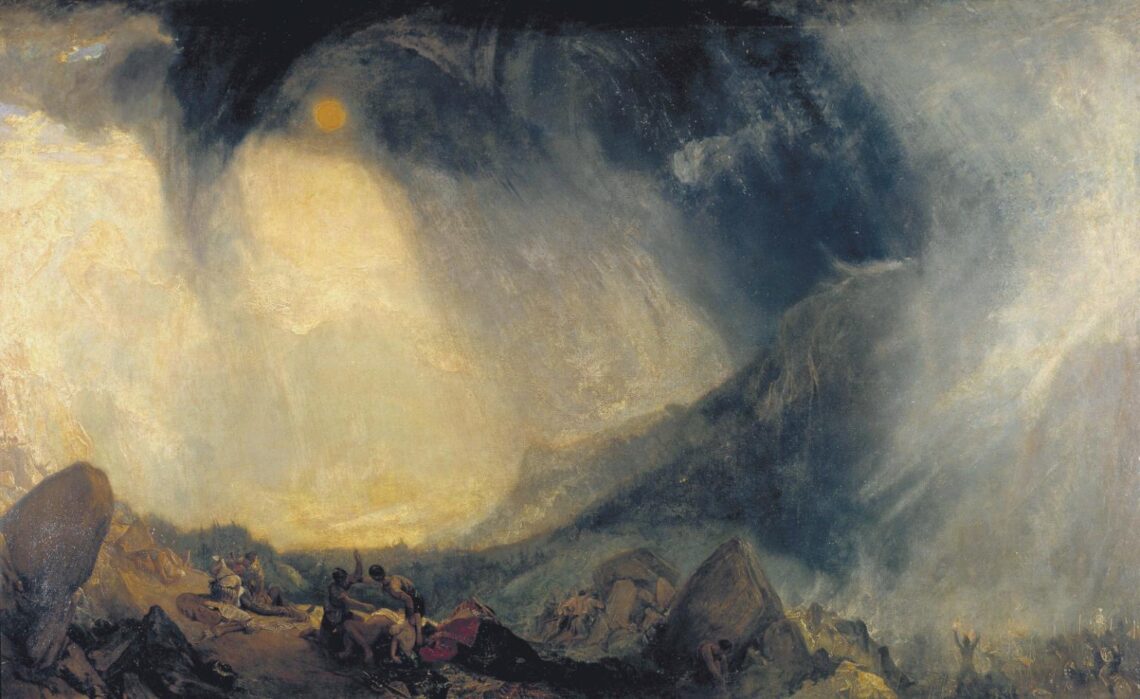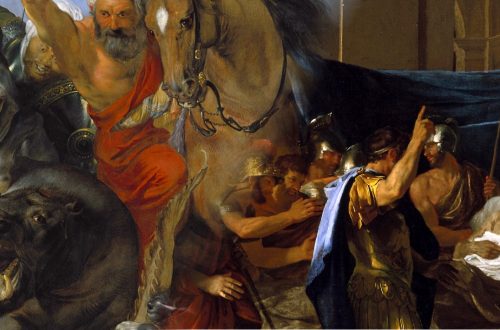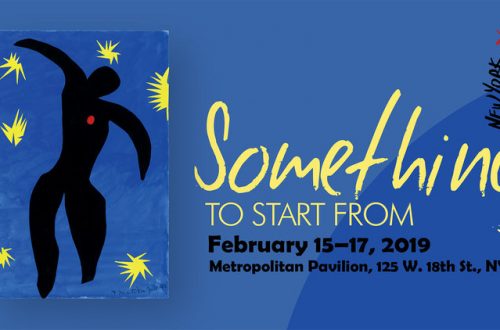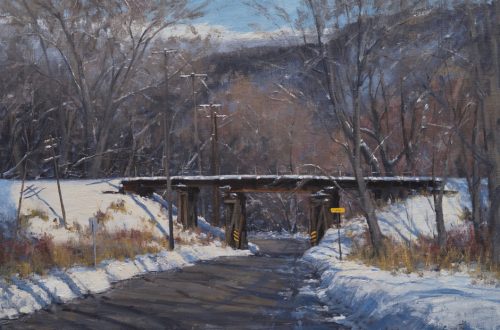by Andrew Grum Carr
By late May the curb in front of the Minneapolis Institute of Art is lined with idling school buses. The museum echoes with classes on year end field trips, students goofy and impatient for summer to start. In the early afternoon, as I stood looking at an oil painting by Winslow Homer, a group of elementary school kids shuffled through, trailed by their teacher, and paused just long enough to label the painting “suspicious,” before moving on. I could hear them pronouncing the same judgment on other pieces in the next room over.
Usually, when I introduce my own students to a new work of art, they comment first on how realistic it is. It seems to be one of the questions closest at hand: Does the painting look real? Sometimes this means: Does it look photographic? Our assumptions about what looks real are so deeply influenced by the language of photography that we tend to conflate “photographic” with “realistic.” During that same visit, in another part of the museum, I overheard a couple praising a painting by John Singer Sargent for looking “just like a photo.”
Or else considerations of realism have to do with how much detail a picture contains, how much visual information per square inch an artist has managed to pack into their work. Or with how immediately convincing that visual information is. The famous painter Giotto, we are told, was initially lauded in large part for his ability to paint convincing marble textures and false architectural moulding. The whole genre of trompe l’oeil painting appeals to this sensibility. Paintings like John Frederick Peto’s Reminiscences of 1865, not only acknowledge and affirm our expectations about how things look, they rely on and take advantage of those assumptions.
And fundamentally, when students begin by considering how realistic an artwork is, I think they’re essentially gauging how closely the work aligns with the way that they see things. Does a painting of a bowl of fruit affirm what they expect a bowl of fruit to look like? Do they recognize it? They’re holding the work up to their own experience, and testing it for authenticity. This can be done at a superficial level, but it can also be done with subtlety and insight. And it’s an approach that legitimizes and empowers the viewer’s perspective.
According to this sense of “realism” the painting I was looking at, Cape Trinity, Saguenay River, Moonlight, might indeed be considered somewhat “suspicious.” The subject is recognizable—a moonlit coast—but the treatment is obscure. It is a massive black painting in a massive black frame. It hangs on the wall like an impenetrable vault door. If it happened to fall from the wall, it seems less likely to break than to lodge itself in the wooden floor. The heavy mat black that composes the slopes of the cape doesn’t directly attack your assumptions about how the world looks, but neither does it simply affirm them. You get the sense of being in a world other than the one you know, but the reality of that world is difficult to deny.
There’s a passage in the novel 1Q84, by Haruki Murikami, which articulates a very different conception of “realism” than the one I’ve just laid out. One of the novel’s central characters is a hideous private detective named Ushikawa. Late in the book, Ushikawa is sitting at the top of a slide in the middle of a park in downtown Tokyo, when he realizes, to his total bewilderment, that there are two moons in the night sky. After the initial shock, we’re given the detective’s internal struggle with this uncanny discovery:
Ushikawa always saw himself as a realist, and he actually was. Metaphysical speculation wasn’t his thing. If something really existed, you had to accept it as a reality, whether or not it made sense or was logical. That was his basic way of thinking. Principles and logic didn’t give birth to reality. Reality came first, and the principles and logic followed. So, he decided, he would have to begin by accepting this reality: that there were two moons in the sky.
The rest of it he would think about later. He sat there, trying not to think, completely absorbed in observing the two moons. He tried to get used to the scene. I have to accept these guys as they are, he said to himself…
Ushikawa was there for some fifteen minutes. He sat, leaning against the railing of the slide, hardly moving a muscle. Like a diver slowly acclimatizing his body to a change in water pressure, he let himself be bathed in the light from these moons, let it seep into his skin. Ushikawa’s instinct told him this was important.”
Here Murikami completely reverses our understanding of “realism.” Whereas the student’s initial intuition is to scrutinize what they see against their own set of assumptions, Ushikawa begins with acceptance. He begins by suspending the demands of his own logic. He begins, in fact, by trying not to think at all, by surrendering to what’s in front of him. He does not subject the experience of the two moons to his own standards—rather he subjects himself to the existence of the moons.
This posture contains a profound potential for growth, but it’s difficult to assume. It takes patience, and a kind of receptivity that is neither active nor passive, but somewhere in between. Sometimes one needs hours to adjust to the unique pressure of a particular work of art. Sometimes days. Or years.
On the other hand, if one’s primary mode of engagement is to “test” the reality of a work, there’s a danger that regardless of whether the work passes, or fails, regardless of whether it is rejected or accepted, the dialogue comes to an end. Artistic encounter can easily be reduced to a binary judgment, one which precludes the possibility of an extended relationship.
Indeed Ushikawa’s posture of patience actually reveals one of the wonderful things about Cape Trinity. If we are willing to sit with it long enough, to let it “seep into our skin,” the subtitles of the painting gradually emerge from its monotony. And in the same way as one’s eyes slowly adjust to an initially indecipherable darkness. The monolithic black opens up: into the green moss black of the nearby mounds, the purple smoke black in the hollow between the hills, the Prussian blue black of the bluff at the bend, like a cool gulp of water in the dark.
The other thing that’s difficult about this way of encountering art, is that it takes trust. You are asked to trust the painting before you understand it, before you can see what it holds for you. You are asked to turn over your attention and your imagination to someone else, not knowing how they may chose to use them. To look at art in this way is vulnerable.
The plaque on the wall next to Homer’s painting says that the work was completed a few years before his death in 1910, and suggests that “the color palette and attention to mysterious shadows create a sense of foreboding.” Much of Homer’s late work took the relentless power of the Atlantic ocean as its subject—images of towering waves crashing against wet black rock. In one painting from this period, Northeaster, Homer originally included two small figures, but five years later painted them out.
Much of Homer’s personality and insight as a painter arose from the fact that he didn’t travel to Europe to learn to how to paint, as so many of his contemporaries, but stayed in America and learned to paint in an American style. That idiom was initially met with consternation and even derision from old world critics like the novelist Henry James, who pronounced Homer’s paintings as course and tasteless, but undeniably powerful.
Nevertheless, Homer expressed a deep admiration for the British landscape painter J.M.W. Turner, whose paintings he went to see at the National Gallery, London during a year long stay in England in 1881. Essential to Turner and his romantic contemporaries was a conviction that beauty and terror, awe and transcendence, were all wrapped up together in what they called the sublime. Their work was built in large part on the premise that profound aesthetic experience arises out of a confrontation with reality that surpasses the scale of human concerns. They found that confrontation in nature—in the cataract, the summit, the storm. And although one would never mistake Homer’s brutal coastal scenes for a work by the European Romantics, there’s a shared spirit of reverence for the power of the inhuman.
Cape Trinity, though still and quiet compared to these deafening scenes of turbulence, nevertheless carries its own sense of awe and fear. And in fact, it bears a striking resemblance to one of Turner’s great masterpieces—Snow Storm: Hannibal and his Army Crossing the Alps. In that painting, Turner’s sun hangs like a counterpart to Homer’s moon: shrouded in snow clouds of Old Testament proportions, a glaring red eye in the heavens.
But whereas Turner’s painting is one of chaos and panic, an image of the natural world slouching over the pathetic designs of man, Homer’s painting manages to be both monumental, even fearful, yet at the same time somehow comforting. The slopes of the cape, though steep, are not sharp cliffs but great soft mounds of earth. Homer’s crescent moon emerges as a solitary comet piercing inland, carving a path through the massive darkness. If it is an eye, it is not impassive or judgmental, but sensitive—even curious. Certainly there is a sense of the smallness of human beings in the face of the dark unknown. But if Homer was afraid, he was also receptive to the beauty in fear.
It’s a vision of darkness that reminds me of a passage from the poem “Night,” by Robinson Jeffers:
Over the dark mountain, over the dark pinewood,
Down the long dark valley along the shrunken river,
Returns the splendor without rays, the shining of shadow,
Peace-bringer, the matrix of all shining and quieter of shinning.
Where the shore widens on the bay she opens her dark wings
And the ocean accepts her glory. O soul worshipful of her
You like the ocean have grave depths where she dwells always,
And the film of waves above that takes the sun takes also
Her, with more love. The sun-lovers have a blonde favorite,
A father of lights and noises, wars, weeping and laughter,
Hot labor, lust and delights and the other blemishes. Quietness
Flows from her deeper fountain; and he will die; and she is immortal.

Andrew Grum Carr is an artist, writer, and teacher from St. Paul MN. He writes short fiction and works in watercolor. He loves cinema, the library, and Saturday night jazz. You can find his artwork at www.andrewgrumcarr.com or follow him on Instagram @andrewgrumcarr.
Header Image: “Snow Storm: Hannibal and his Army Crossing the Alps,” J.M. Turner, c. 1810-1812, public domain





